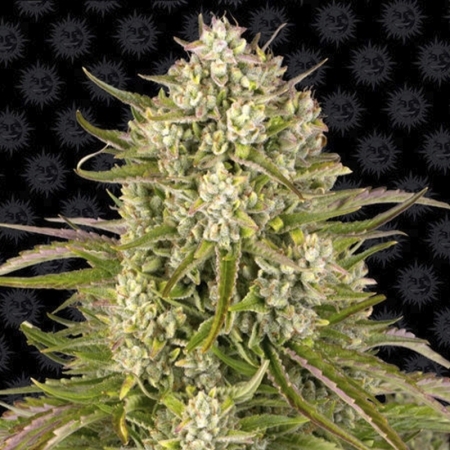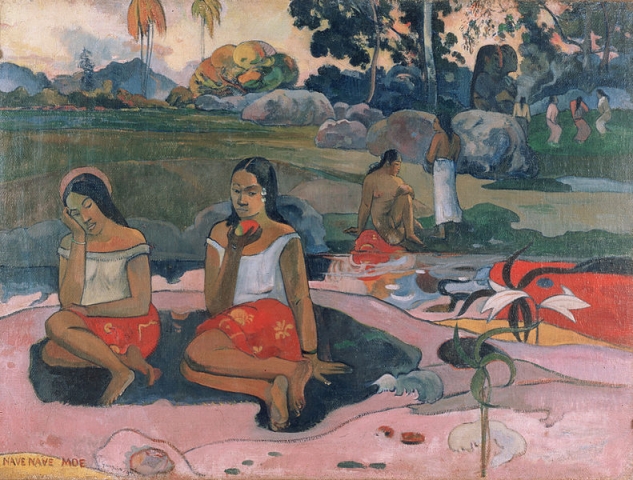Differences between Sativa, Indica and Ruderalis
Most users have heard of Indica and Sativa. Weed is divided between these two strains (together with Ruderalis, more on this later). But what is the difference between the two, and what suits you best? You may also end up with the golden mean: a hybrid strain, where the weed plant consists of about 50% Sativa and 50% Indica.
You have blowers that can really appreciate all types of cannabis, as long as there's enough THC in them. You also have more picky blowers, who can analyse every nuance between different strains. They can tell you why they love an OG Kush more than a Haze (or vice versa of course).
Cannabinoids and terpenes
In any case, cannabis plants consist of hundreds of different substances, all of which contribute to the weed's unique properties. The substances that play the greatest role in this are cannabinoids and terpenes.
The best-known cannabinoids are THC and CBD.
THC: causes you to get high and also makes you hungry and euphoric. It can also take away pain.
CBD: can have anti-inflammatory, relaxing effects, plus numerous other therapeutic properties.
Terpenes probably play a major role in the effect of the weed. They are the aromatic substances produced by the same glands as cannabinoids. These aromatic oils are widely used in aromatherapy. Maybe you have experience with them yourself, a few drops of lavender oil on your pillow so you can sleep better, light an incense stick to come to your senses before you start your Magic Truffle journey... these fragrances can have a strong influence on us. In this blog you can read more about the power of terpenes and their unique effects.
Indica
In India, the Middle East and Central Asia (Afghanistan, Pakistan and Kashmir) Indica is common by nature. This plant is bushy and stocky, with broad leaves with short 'fingers'. They are generally dark green in colour. The plant produces a strong smell which, depending on the terpene profile, is also called 'skunk'.
By the way, Skunk is also a family of cannabis varieties that originated in California. Skunk is super easy to grow and grows fast, a reason why they are so popular. It owes its name to the skunk, which occurs in California and has a pungent smell.
But further on about Indica:
This cannabis strain is loved by growers for its strong, compact appearance, and fat THC-rich buds. Indica generally has a dark green colour, with leaves that can turn dark purple or reddish. They are strong plants that are generally resistant to pests and fungi. Their roots remain compact.
Indica strains generally have a higher CBD to THC ratio, which contributes to the strong physical relaxation effect. A typical stoned feeling, where you feel relaxed and it can be wonderful to lie cozy on the couch. In high doses you can almost literally become like stone. Perfect for when you have no obligations, a sunny day in the garden, or in the evening to fall asleep better.
Sativa
Sativa has its origins in Asia, Central and South America, and Africa. In each area the plants have their own specific characteristics, but they all have the same characteristics: a long, lanky appearance with lots of space between the internodes, an extensive root system. Their leaves are thin and long. Outdoors, a Sativa can grow over 4.5m tall! She produces slightly more frugal buds when grown under lights. Sativas flower weeks to months later than Indicas. In South Africa, many different Sativa strains have been brought together by sailors who planted their seeds here. Durban Poison is South Africa's best known strain.
Sativa can give you an energetic, speedy high that can generate a lot of creativity. She is therefore ideal for physical exertion, social occasions and creative projects. In high doses there is also a chance of paranoia. For some users, Sativa is not their first choice.
Ruderalis
Ruderalis is at first sight a somewhat meaningless plant compared to the appearance of the robust Indica and the elegant Sativa.
Ruderalis comes from 'rudus', the Latin word meaning rubble or lump, which means that plants grow in places that have been changed over time by man or nature. Cannabis Ruderalis grows in the wild, in cold regions. It is found in Central Asia and Central Europe. Cannabis Ruderalis was used in ancient folk medicine in Mongolia and Russia as an antidepressant. Ruderalis naturally contains lots of CBD and less of THC.
Cannabis Ruderalis grows to a height of only 30-80 cm and, like Indica, has broad leaves. Its trump card is that it flowers automatically when it is old enough, so it doesn't have to worry about the number of light hours. With tropical Sativa and Indica from the Middle East, it is important that the plants are in the dark for at least 10 hours. As autumn falls and the sun shines less, cannabis plants start to flower because the light schedule changes. Indoor growers should therefore change their light schedule from 18 hours of light and 6 hours of darkness (the growth phase) to a flowering schedule, usually 12 hours of light followed by 12 hours of darkness. Indoors a timer switch is used.
Cannabis Ruderalis makes it possible to create Autoflowers, plants that bloom automatically, regardless of the number of light hours. Because summers are extremely short in Russia and elsewhere, the Ruderalis plant has evolved and developed a self-flowering capacity. By adding her genes to new types of weed, you get those properties in your weed plant. This is very interesting, because it makes growing a lot easier. For outdoor growers this means that harvesting can be done much earlier. There is no need to wait for the shorter autumn days, which can also cause fungal problems because of the wet weather during this time of the year.
Did you enjoy reading this article and do you like to write yourself? We are always looking for people who share our passion for natural products, who can also translate this into great texts. And we have an interesting reward for this. View all information for writers.
Royal AK
 Blog Psychedelics
Can psychedelics help manifest my dreams?
Although you can say a lot of bad things about this strange time in which we live, as a positive note I can say that it strikes me that it makes peopl [..]
01-06-2023
8 minutes
Blog Psychedelics
Can psychedelics help manifest my dreams?
Although you can say a lot of bad things about this strange time in which we live, as a positive note I can say that it strikes me that it makes peopl [..]
01-06-2023
8 minutes
 Blog Cannabis
Barneys Farm Wedding Cake Auto – Cannabis Seed Review
With this cannabis seed review about Wedding Cake Auto, I want to try out something new and combine two things: I want to review a cannabis strain tha [..]
20-08-2021
8 minutes
Blog Cannabis
Barneys Farm Wedding Cake Auto – Cannabis Seed Review
With this cannabis seed review about Wedding Cake Auto, I want to try out something new and combine two things: I want to review a cannabis strain tha [..]
20-08-2021
8 minutes
 Blog Cannabis
Cannabis oil, hash oil, THC oil or hemp seed oil after all?
Cannabis oil, hash oil, THC oil, or hemp oil anyway? What are the differences and what should you pay attention to if you want to use it yourself [..]
Blog Cannabis
Cannabis oil, hash oil, THC oil or hemp seed oil after all?
Cannabis oil, hash oil, THC oil, or hemp oil anyway? What are the differences and what should you pay attention to if you want to use it yourself [..]













 Nederlands
Nederlands Italiano
Italiano Deutsch
Deutsch Français
Français Português
Português Español
Español Polski
Polski